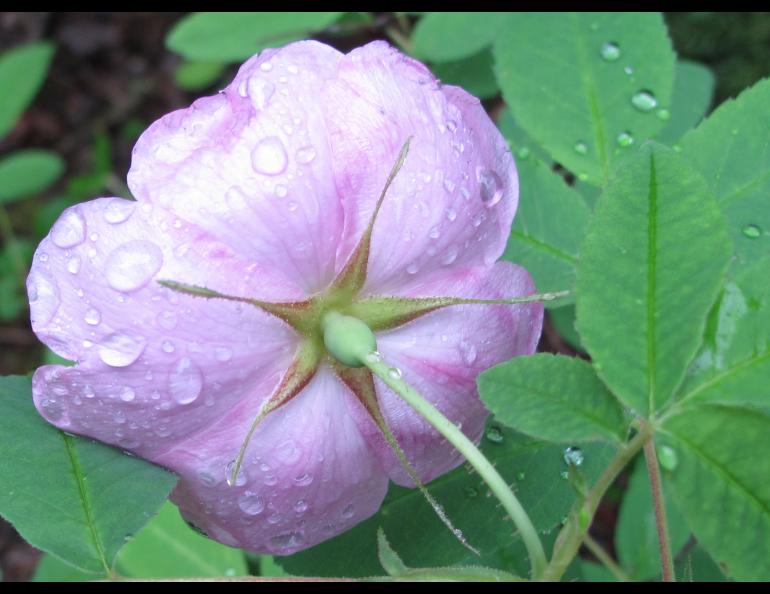
The humidification of the Arctic
Uma Bhatt remembers summers in Fairbanks when she could open a package of crackers, leave it unsealed, and find them in a near-identical state a few weeks later. Those crackers now seem to lose their snap in just a few days.
An atmospheric scientist at UAF, Bhatt gave a recent talk on a rainy October day in which she mentioned the humidification of the Arctic, a region often as dry as a desert.
“As the sea ice has gone away, moisture is replacing temperature as the most important variable,” she said.
The ice that floats on top of the Arctic Ocean has been shrinking in extent for decades, with a much sharper slope of decline since 2000. Not only has northern ice covered less ocean, it has also become thinner, which allows it to melt faster.
Right now, as we enter the cold season, much of the ocean surrounding Alaska is up to 3 degrees Celsius warmer than normal.
“New ice is not going to form very quickly,” Bhatt said. “It’s very warm in the ocean all around Alaska. That’s got to be important in the weather we’re having right now.”
Unlike reflective sea ice, open ocean warms the land around it. Residents of Utqiagvik on Alaska’s northern coast have noticed this, as November’s average temperature has increased about 7 degrees Fahrenheit since 2000 due to the recent absence of sea ice on their shores.
Less sea ice may be causing Alaska and other northern places to become less continental, Bhatt and her colleagues Skip Walker and Martha Raynolds think. That means differences between summer and winter temperatures are getting smaller.
Interior Alaska has a continental climate; areas hundreds of miles from the moderating effect of the ocean swing from hot to very cold. The state’s all-time low temperature of minus 80 degrees Fahrenheit at Prospect Creek (on Jan. 23, 1971) happened only 150 miles from its all-time high of 100 degrees in Fort Yukon (on June 27, 1915).
But that 180-degree difference might be a thing of the past, as Alaska and other northern places become more maritime. Plants, especially those on Alaska’s North Slope, are expanding and making the tundra greener in response to less cold air, which limited their growth before.
The humidification of the Arctic has happened before. As the Bering Land Bridge was flooded when sea level rose from about 14,000 to 10,000 years ago, relatively warm waters flowed into the Arctic for a few thousand years. Precipitation in western Alaska increased about 50 percent. That triggered a change from a landscape filled with grasses and forbs to the present-day moss, sedge and shrub-dominated tundra.
As for modern times, climatologist Rick Thoman of the University of Alaska calculated the total amount of water in the air at one point for Alaska during the warm season from May to September, since 1949. He notes that precipitable water has been trending upward in Alaska since about 1980.
The consequences of a more humid existence include more days of rain, milder nights, split salmon that do not dry as well on the pole and mold growing in places Alaskans haven’t seen it before.
Alaska and other places straddling the Arctic Circle are becoming wetter as sea ice declines. Photos by Ned Rozell.





